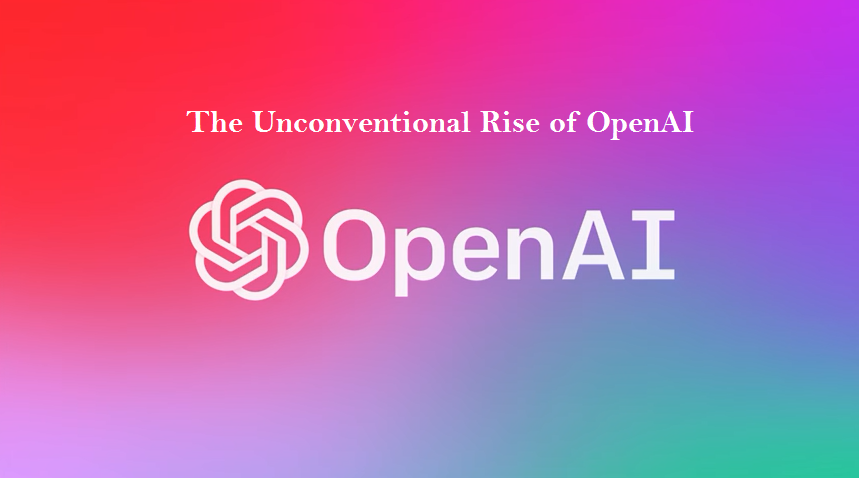The Unconventional Rise of OpenAI
OpenAI is a research organization dedicated to developing and advancing artificial intelligence in a safe and beneficial way for humanity. The organization was founded in 2015 by a group of high-profile technology executives and investors, including Elon Musk, Sam Altman, Greg Brockman, and others.
The journey of OpenAI has been unconventional in many ways, starting with its founding. Initially, OpenAI was set up as a for-profit company, with the goal of using AI to solve some of the world’s most pressing problems. However, in 2018, the organization decided to become a non-profit company, in order to better align with its mission of advancing AI in a safe and beneficial way.

Another unconventional aspect of OpenAI is its approach to research. Unlike traditional academic institutions, OpenAI operates as a decentralized research organization, with researchers working on a wide range of projects across different locations. This approach allows the organization to tap into a diverse set of perspectives and expertise, and to move quickly and efficiently on promising research directions.
OpenAI has also been at the forefront of developing cutting-edge AI technologies, including the development of the GPT (Generative Pre-trained Transformer) series of language models, which have set new benchmarks for natural language processing.
Finally, OpenAI has been vocal about the potential risks and challenges associated with AI, and has taken steps to ensure that AI is developed and used in a safe and responsible way. This includes the creation of the OpenAI Charter, which outlines the organization’s commitment to developing AI in a way that is aligned with human values and interests.
Overall, the journey of OpenAI has been characterized by a commitment to advancing AI in a way that is safe and beneficial for humanity, and a willingness to take unconventional approaches to achieve this goal.
A hybrid structure
A hybrid structure generally refers to an organizational model that combines elements of different structures, such as a hierarchical structure and a flat structure, to create a unique hybrid model that meets the specific needs of the organization.
In a hybrid structure, different parts of the organization may have different reporting structures or decision-making processes. For example, a company may have a traditional hierarchical structure in its finance and accounting departments, but a more decentralized structure in its creative departments, such as marketing or product design.
Hybrid structures can offer several advantages over traditional structures, such as increased flexibility and adaptability to changing circumstances, a greater ability to respond to customer needs and market demands, and a more collaborative and innovative work environment.
However, hybrid structures can also be more complex and difficult to manage, as different parts of the organization may have different cultures, values, and priorities. Successful implementation of a hybrid structure requires careful planning, effective communication, and strong leadership to ensure that all parts of the organization work together towards common goals.
Prioritizing AGI over ANI
AGI (Artificial General Intelligence) and ANI (Artificial Narrow Intelligence) are two different approaches to developing artificial intelligence. ANI refers to AI systems that are designed to perform a specific task or set of tasks, while AGI aims to create machines that can perform any intellectual task that a human can do.
Prioritizing AGI over ANI would mean focusing resources and research efforts on developing general-purpose AI systems that can perform a wide range of tasks, rather than on specific task-oriented AI systems.
There are arguments both for and against prioritizing AGI over ANI. Supporters of AGI argue that it is the key to unlocking the full potential of AI and achieving breakthroughs in fields such as medicine, energy, and environmental sustainability. They also argue that AGI has the potential to create new jobs and industries, and to improve the overall quality of life for people around the world.
However, critics of prioritizing AGI argue that it is a more distant and uncertain goal than ANI, and that it may divert resources and attention away from more immediate and practical AI applications. They also point out that AGI raises a host of ethical and safety concerns, such as the potential for AI systems to outsmart and control humans, or to be used for destructive purposes.
Ultimately, the choice between prioritizing AGI over ANI will depend on the goals, values, and priorities of the individuals and organizations involved in AI research and development, as well as on the available resources and technological capabilities.














